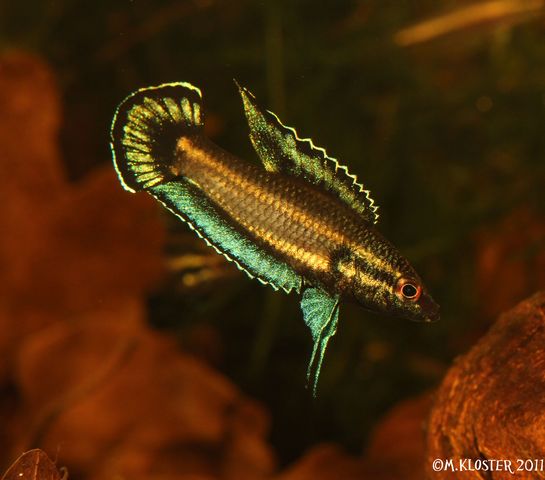The Genus Parosphromenus Bleeker 1877
The fish that Pieter Bleeker described scientifically for the first time in 1859, differed significantly from the already known members of the genus Osphronemus, which he had established earlier. This difference made him think. After he had initially classified the fish as a member of this genus, 18 years later he defined another genus for this species: Parosphromenus (”false or abnormal Osphronemus”), but he made the mistake to swap ”n” and ”m” in the name. According to the rules of nomenclature, this error had to be retained.
All licorice gouramis breed in caves. In their natural habitats probably all types of small caves are used, which can be found in forest swamps or rivers: small cavities in submersed dead wood, cave-like spaces in thickets, empty mussel or snail shells and certainly, very often, small hiding places below old leaves or layers of leaves, which cover the substrate in many habitats. Licorice gouramis can often be found at greater water depths than other labyrinth fish; it is not uncommon to find them one to two meters below the surface. This is without question also related to the following point.

In fact, a pecularity of this genus is that these fish have a fully functional labyrinth – the additional breathing organ of this group of fish – but hardly ever use it. In principle they are foam nest builders, like the rest of the labyrinth fish, but most of their species only build rudimentary, small foam nests in their caves. P. filamentosus collects a relatively large number of air bubbles from the surface, while P. parvulus uses only very few, if any. For this purpose the labyrinth comes into action. It will be used immediately, if a sudden, drastic deterioration of the environmental conditions takes place, which can be observed in the aquarium during water changes and corresponding significant changes of pH . Normally, however, the labyrinth is rarely used at all. Walter Foersch recognised early on that he never saw his fish breathing. He even installed nets just below the surface to purposely prevent the fish from breathing, but they did not show any sign of discomfort.
Anyone, who compares different licorice gouramis, will recognise that there is a lot of similarity among species and varieties. Apart from the appearance of the fish, their requirements towards the environment are similar. With the exception of P. paludicola, which shows, through its more pastel-like overall colour and the lack of clear luminous patterns in its fins, that it lives in clearerer waters and not in these extreme black water habitats, most of the other species are typical inhabitants of shaded, flowing swampy forest waters. Therefore it is not really necessary to describe individual maintenance and breeding conditions for each of the forms, it is sufficient to do so for the whole genus.
(PF)

